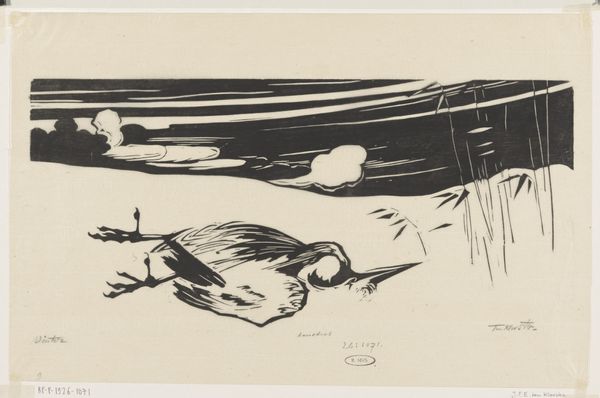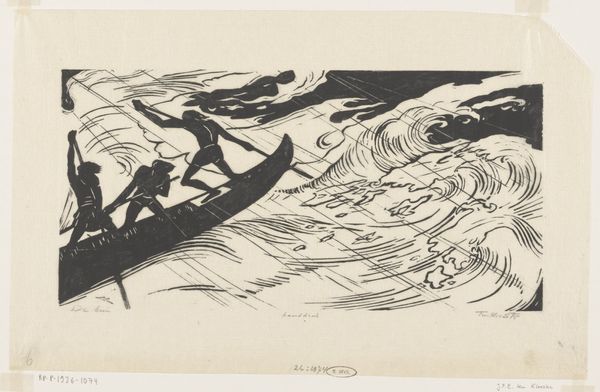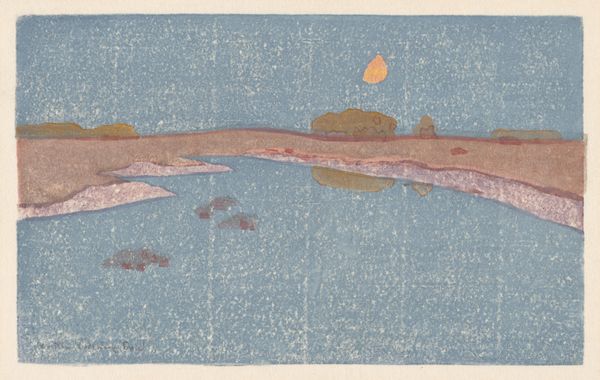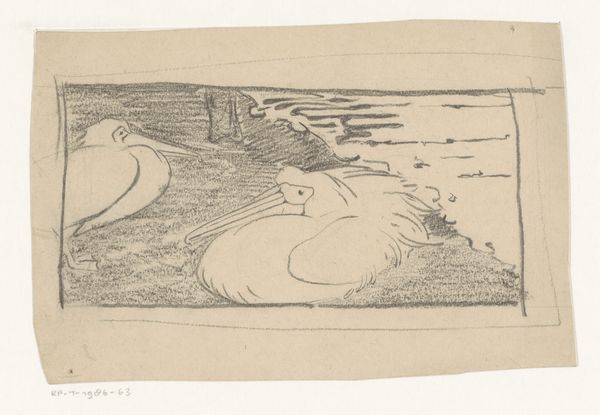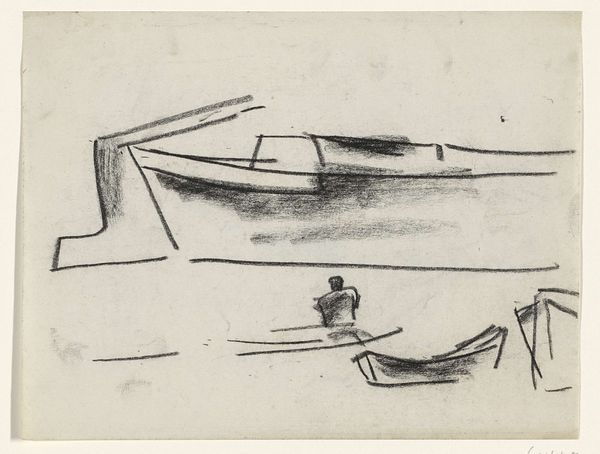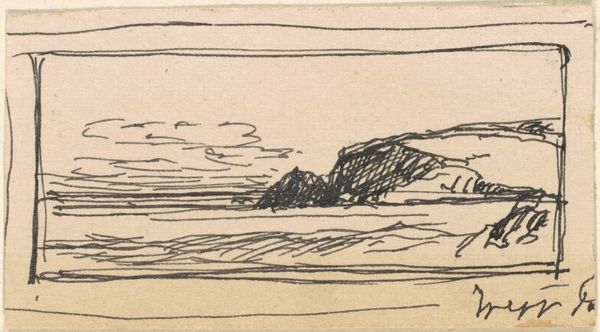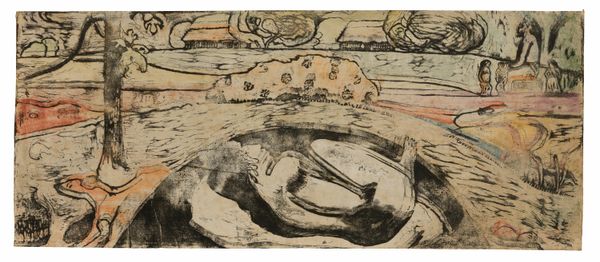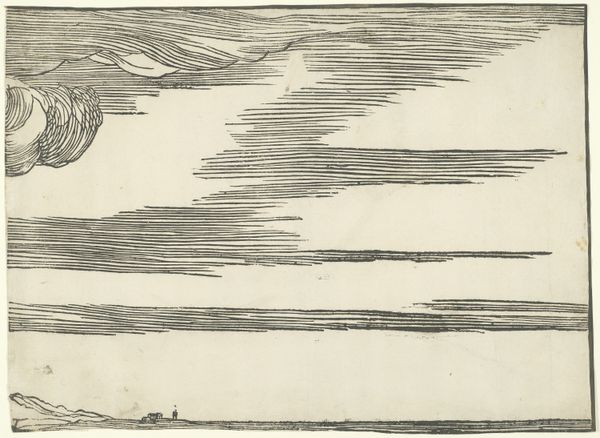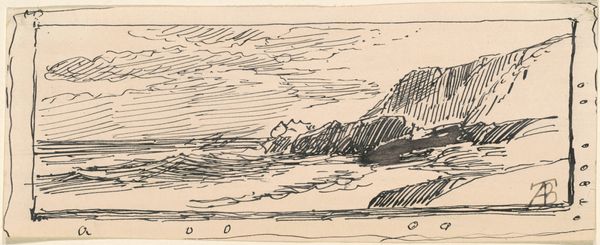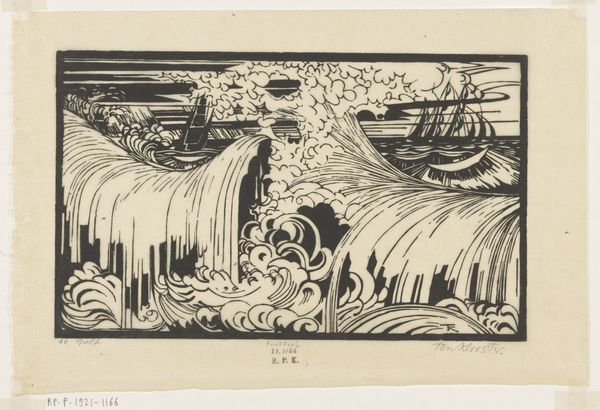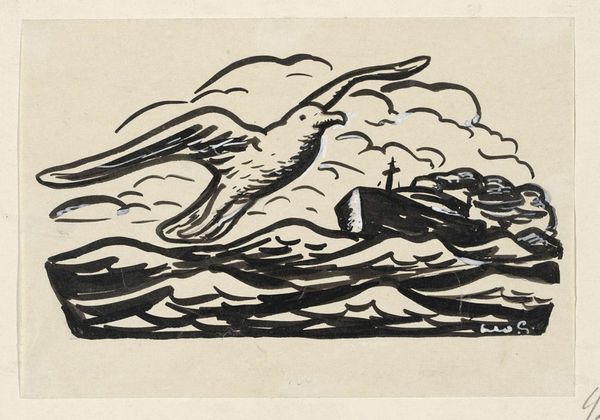
print, woodcut
# print
#
landscape
#
caricature
#
cartoon sketch
#
figuration
#
woodcut
#
line
#
modernism
Dimensions: height 240 mm, width 427 mm, height mm, width mm
Copyright: Rijks Museum: Open Domain
Curator: Here we have Bernard Essers' woodcut print, "Zee bij Bergen," dating from around 1925. What are your initial thoughts? Editor: It's striking how the stylized waves dominate the composition, like dark, rhythmic bands across the paper. The overall effect feels a bit theatrical, almost staged. Curator: The composition indeed has a performative quality, doesn’t it? Essers, influenced by the burgeoning modernist aesthetic of his time, crafted this print which captures not only the look, but also the feeling of the coastal region of Bergen in the Netherlands. This area became an important spot for artists. Editor: I notice that even though the lines appear simple, they give a real sense of movement and texture. Look at the small flourishes at the wave’s base. Also, that limited palette, the light blue, yellow, dark brown and ochre colors, they work wonderfully. It emphasizes a deliberate flattening of space, don’t you think? Curator: I do. And that flattening also mirrors a broader shift in the artistic landscape. This piece reflects a turn from academic representational art towards more stylized and socially engaged forms. Woodcuts were particularly suited to this era due to their relative ease of production and dissemination, allowing artists to engage with wider audiences. The scenes, sometimes satirical, would comment on current events or trends. Editor: The almost caricatured style of the seabirds seems very much of its time, and those sails on the horizon are simplified down to their bare essentials. The artist really seemed invested in the visual shorthand. Curator: Exactly. Essers manages to both depict and, in a way, critique the beach scene through a very conscious application of style. The print acted as a form of accessible social commentary. Editor: I appreciate seeing how he's balanced form and function. Essers makes aesthetic choices that support his engagement with the world around him. It invites closer looking. Curator: A perfect meeting of style, sentiment and society in one deceptively simple image. Editor: Yes, definitely one of those works that reveals more with each observation.
Comments
No comments
Be the first to comment and join the conversation on the ultimate creative platform.

